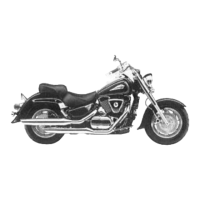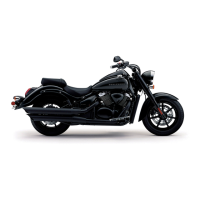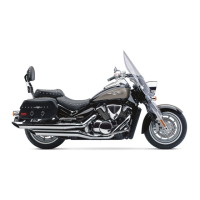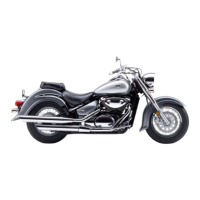3-30 ENGINE
TOP NARROWING CUT
• If the contact area is too high on the valve, or if it is too wide,
use the 15° or 32° cutter to lower and narrow the contact area.
(Use the 32° cutter for intake.)
(Use the 15° cutter for exhaust.)
FINAL SEAT CUT
• If the contact area is too low or too narrow, use the 45° cutter to
raise and widen the contact area.
NOTE:
After cutting the 15° and 32° angles, it is possible that the valve
seat (45°) is too narrow. If so, re-cut the valve seat to the correct
width.
• After the desired seat position and width is achieved, use the
45°cutter very lightly to clean up any burrs caused by the previ-
ous cutting operations.
"
Do not use lapping compound after the final cut is made.
The finished valve seat should have a velvety smooth
finish but not a highly polished or shiny finish. This will
provide a soft surface for the final seating of the valve
which will occur during the first few seconds of engine
operation.
NOTE:
After servicing the valve seats, be sure to check the valve clear-
ance after the cylinder head has been reinstalled. (
%
2-4)
VALVE SEAT SEALING CONDITION INSPECTION
With the valve and valve spring assembled, pour a small quantity
of gasoline into the intake or exhaust port.
Check that no gasoline leaks though the valve seat. If leakage is
found, correct the sealing surface.
&
Always use extreme caution when handling gasoline.
Contact area too high and too
wide on face of valve
32°: For intake
15°: For exhaust
Contact area too low and too
narrow on face of valve
45°
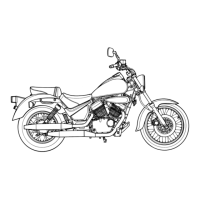
